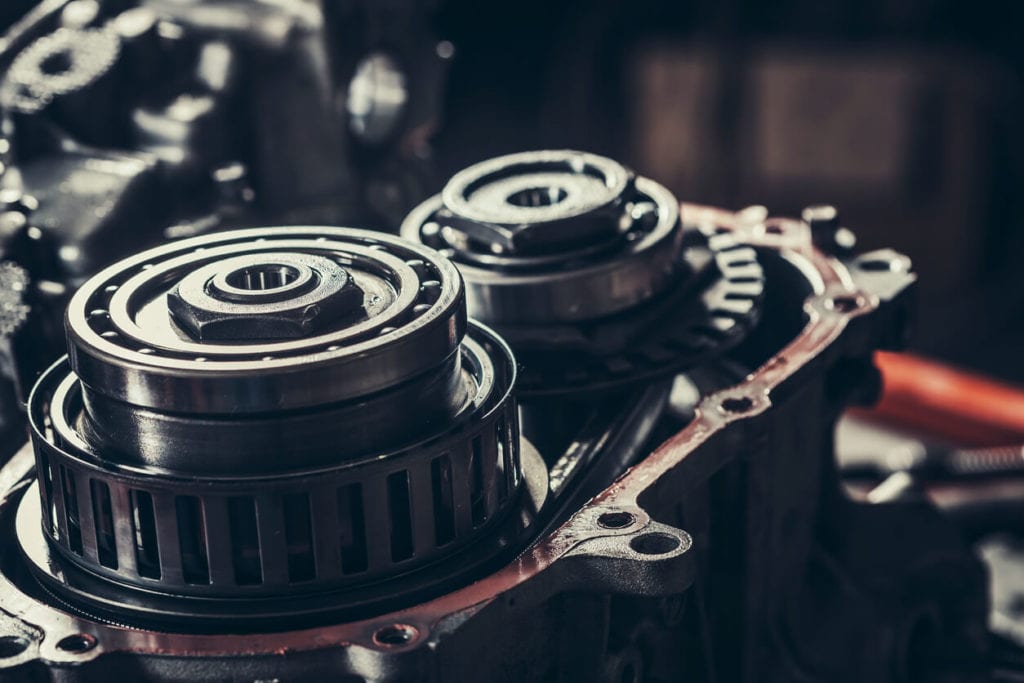Transmissions, like your engine, are essential in creating the power to move your vehicle. While the engine produces the power, the transmission sends the power generated to move the wheels. With new technology emerging and vehicle manufacturers making vast improvements to the automobile, CVT or continuously variable transmissions, are just another way the vehicle has improved. Still, some drivers aren’t entirely impressed with the change. Like everything else, CVT transmissions come with their pros and cons. We’ll discuss the differences to help you decide if a CVT transmission is the right choice for you.
What is a CVT Transmission?

CVT transmissions, unlike a typical transmission, lack individual gears. Instead, it has just one singular gear that adjusts for any driving condition. Drivers will be unaware of the feeling of gears changing from one to the other yet, will identify an increase in engine speed or change in RPMs, higher for acceleration and lower while cruising.
Microprocessors and sensors along with the hydraulic pressure, spring tension, and centrifugal force are used to create force to activate the two pulleys responsible for the CVT to operate. The driving or input pulley is connected to the crankshaft of the engine and is where the energy produced by the engine enters the transmission. The driven or output pulley, turned by the driving pulley, transfers energy to the driveshaft. As the pulleys adjust their radius simultaneously, they are able to create an infinite number of gear ratios ranging from low to high.
Pros of Choosing a CVT Transmission
- Better Fuel Efficiency – CVTs are able to adjust their gear ratios, instantly with an infinite range, making it the most fuel-efficient transmission. Vehicles with CVT Transmissions have the potential of reaching up to 38 MPG for a mid-sized sedan.
- Smoother and Faster Take Off – With the absence of gearing, CVTs are able to locate and sustain an optimal torque ratio.
- Easier Going Uphill – Ordinary automatic transmissions may struggle under a heavy load whereas CVTs compute the correct ratio needed to provide the right amount of power without having to shift.
- Smooth Gear Changes – Since there is a lack of gear shifts, the feeling is more even when increasing or decreasing speeds. There is a lack of pauses or a brief decrease in power when accelerating compared to an ordinary automatic transmission.
- Better for Stop and Go Traffic Conditions – CVTs are able to accelerate quickly, making the stop and go traffic conditions easier than an automatic having to start up frequently from a stop position.
Cons of CVT Transmissions
- Feels Different – Many drivers have grown accustomed to the feeling of changing gears. Manual transmissions and even automatic transmissions with gears, drivers can feel the shudder of the car from one gear to the next. Conversely, CVTs provide continuous acceleration, eliminating any kind of jolt or shudder its counterparts experience.
- Cost Prohibitive – Most drivers dread the thought of having to replace a transmission. When it’s a CVT, though, replacements can cost anywhere between $3000 – $5000, simply because they cost more to produce than manual or automatic transmissions. In many cases, manual and automatic transmissions can be rebuilt when they fail, however, CVTs cannot be rebuilt and instead, must be replaced.
- Humming Sound – Similar to the sound of a drone, CVTs emit a high-pitched continuous hum as you drive.
- Shorter Lifespan – CVTs don’t typically last as long as automatic transmissions, often requiring replacement at about 100,000 miles.
- Difficult to Repair – It is strongly discouraged for the DIYer to service a CVT transmission due to their complexities and design. Basic maintenance and repairs should be only be performed by a trusted and certified auto repair facility.
- Not Designed for High-Performance Vehicles – CVTs are often designed for hybrids and less powerful four-cylinder engines, as opposed to vehicles with higher torque and horsepower.
Common Problems with CVT Transmissions
Fuel efficiency and smoother driving aside, on occasion any vehicle will experience troubles. Here are some of the most common issues the CVT transmissions experience along with their symptoms, and how to address them properly.
- Leaks – A CVT has the potential to leak from any of its twenty seals. Some of these exterior seals are accessible and easily repaired while others may be more difficult to locate and repair.
- Vibrations – A bucking or shaking feeling at higher speeds can be the result of a poorly tuned engine or a difficulty with the transmission itself. A certified technician will be able to identify the cause.
- Hesitation – CVTs can often experience hesitation from changing gears from park to drive or reverse. This delay of engagement is often the result of low transmission fluid, a loose belt, or a failed clutch pack from an internal seal.
- Burning Smell – An overheated transmission or transmission fluid that has leaked into the exhaust system produces an unpleasant burning smell. No matter the cause, the issue should be inspected and resolved immediately to prevent further damage to the system.
- Slipping – Transmission slip occurs when the engine is revving rapidly but the power isn’t transferred to the wheels. Many things can contribute to the cause of a transmission slip. A qualified technician will need to determine the cause to resolve the issue.
Transmissions are complex components that need a well-experienced technician to inspect and repair them properly. At Sun Auto Service, our Transmission Department employs only the best, most proficient technicians in transmission repair. This ensures your transmission receives the same care that a dealership would provide at a competitive price. Whether your vehicle is equipped with a CVT, automatic, or manual transmission, you can trust us to provide the kind of care your vehicle needs most.
